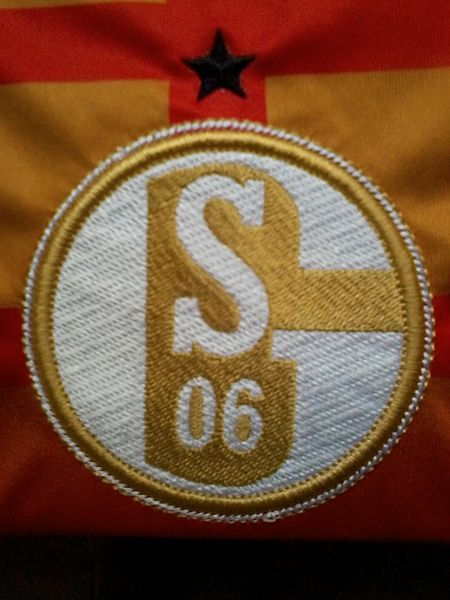Considerations for Machine Embroidery on Jersey and Interlock Fabric
Machine embroidery is an excellent way to embellish and personalize t-shirts but the thin stretchy fabric requires extra care to achieve professional-looking results.
For adults and children around the world, t-shirts are a summertime wardrobe staple. Machine embroidery is a fun way to personalize plain shirts, but jersey and interlock fabric can be tricky to work with.
Choosing the Right Embroidery Design for T-shirts
Because t-shirts are usually light to medium weight and very stretchy, the design choice is essential. Look for light designs with lots of open areas and avoid stitch-filled designs and solid shapes. More dense designs and solid shapes will weigh down the fabric and cause it to droop instead of draping nicely. Stitch-filled designs also put more strain on the fabric and risk causing it to stretch or shift in the hoop. This could cause the finished design to be misaligned or the fabric around the design to pucker.
Fabric Preparation and Care
T-shirts, especially 100% cotton ones, are notorious for shrinking when washed. It is essential to launder the shirt once or twice before embroidering. The shirt should be washed and dried the same way it will be treated after embroidery to make sure that any shrinkage takes place before embroidery. As an extra precaution, the shirt can be hand-washed and hung to dry after embroidery, but this shouldn’t be necessary as long as it is properly prepped before stitching.
When adding applique to a t-shirt, it is important to make sure that the applique fabric has also been pre-washed and is sufficiently stabilized so that the applique doesn’t shrink separately from the rest of the shirt.
Stabilizing T-shirts for Embroidery
Many people like to use tearaway or water-soluble stabilizer on t-shirts so that no stabilizer will show through once the design is finished. Neither of these options provides enough support for the t-shirt fabric during or after stitching. For best results, light or medium weight cutaway stabilizer should be used, and the stabilizer should be adhered to the fabric before hooping.
Floriani makes a no-show fusible mesh stabilizer that works very well for t-shirts. The mesh is sturdy enough to support the fabric during and after embroidery but is very soft and is designed not to show through the fabric.
Once the shirt is embroidered, trim any excess stabilizer to within 1/4-1/2″ of the design. Do not attempt to remove the stabilizer from any open areas within the design.
If the back of the embroidery is “scratchy” or uncomfortable, cut a piece of fusible stabilizer slightly larger than the design and iron it over the wrong side of the stitches. After a few trips through the dryer, the backing will begin to peel away, but by that time, the stitches will have softened enough not to irritate sensitive skin.
Hooping T-shirts for Embroidery
Because t-shirts are naturally stretchy, it is important to make sure that they are hooped tightly but not stretched. Using a fusible (iron-on) stabilizer or attaching the stabilizer to the fabric with spray adhesive will make it much easier to hoop the shirt without stretching it.
It is important to hoop the shirt and stabilizer together instead of hooping sticky stabilizer and placing the shirt on top. When the needle is pounding away ten times per second or more, the fabric is very likely to stretch and shift. Hooping the fabric with the stabilizer minimizes this effect and produces a crisp, perfectly aligned design.
Never try to adjust a t-shirt after it is hooped as this will lead to stretching and skewing of the fabric. If the fabric needs to be tightened or repositioned, remove the hoop and start over.
Ball Point Needles for Embroidery
Ball Point Needles are made specifically for knit fabrics. They have a rounded tip which pushes the fibers aside rather than actually piercing the fibers. This is important with t-shirts because a sharp or universal needle can cause runs in the fabric around the design.
Embroidery Design Placement on T-shirts
Exact Placement will depend on the size of the shirt and the size and shape of the design, but the guidelines below are a starting point. It is a good idea to print a full-size image of the design and use that to determine placement. Be sure to mark horizontal and vertical axis points and the center of the design to line the fabric up properly in the hoop.
To embroider on the left chest of polo shirts or t-shirts without pockets, the design should be centered between the placket and the side seam or between the center of the shirt and the side seam. On adult shirts, the design should be 7-9″ down from the left shoulder seam, 5-7″ down on children’s shirts, and 3.5-4.5″ down on infant/toddler shirts.
To embroider on the left chest of a t-shirt or polo shirt with a pocket, the pattern should be centered on or above the pocket.
For designs on a shirt front, consider the size and shape of the design and the size of the shirt. Generally, the design must be centered between the left and right seams, and the top of the design should be 4-6″ from the collar on adult shirts, 3-4.5″ from the collar on children’s shirts, and 1.5-3″ from the collar on infant/toddler shirts.
For designs on a shirt back, the embroidery should be centered between the right and left side seams and about 5″ down from the collar on adult shirts, 3.5-5″ from the collar on children’s shirts, and 2-4″ from the collar on infant/toddler shirts.
Machine embroidery is an easy way to dress up and customize inexpensive t-shirts for children and adults. With proper care and consideration, home embroiderers can achieve professional-quality results every time.

